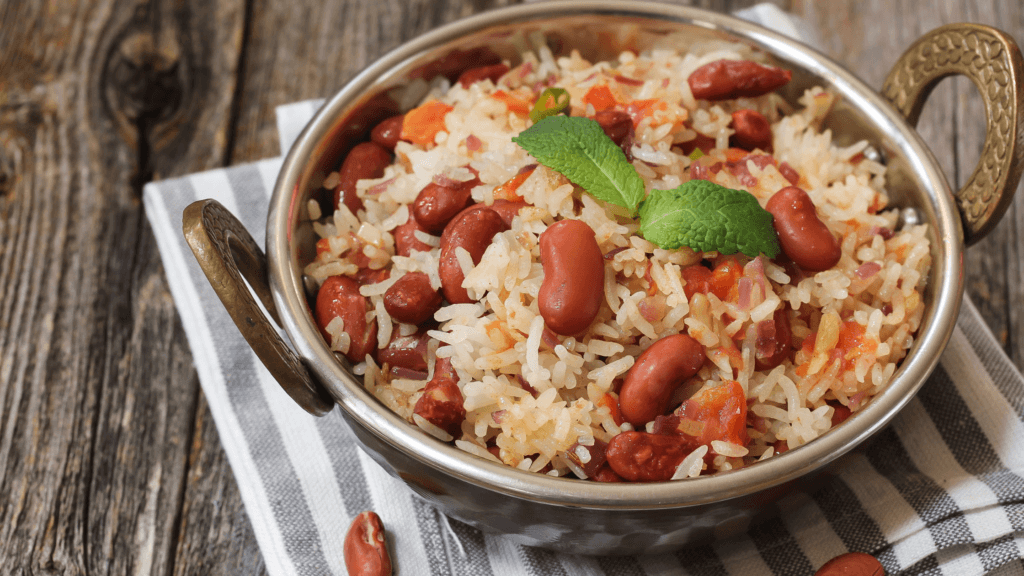Are you new to prepping? With the way the world has been lately, it’s not surprising that more and more people are starting to look at gathering food and storing it for an emergency. The problem is that most people aren’t sure what they should be stocking up on. In this post, we’ll look at an emergency food supply list for when you’re just starting out.
First, it’s important to note that you should stock up on food that you and your family will actually eat. There’s no point in stockpiling cans of beans if your kids will never touch them. You want to be sure that there’s food for everyone.
In an emergency situation, you’ll want to have food that is relatively easy to prepare, nutritious to a point (if you are stuck for a couple of days, it won’t kill anyone to eat ramen noodles and peanut butter for that time), and filling. However, if you’re stocking up for a longer term problem, you want food that is nutritious and long lasting. Keep this in mind as you make your emergency food supply list.
72 Hour Emergency Food Supply List
Everyone should have enough food set aside to survive for 72 hours or three days. This is a typical emergency plan and is ideal for when you have a major storm or if there is some civil unrest in your area and you can’t go out for a bit.
It’s a good idea to have food that is ready to eat in your supply for when the power goes out or if you can’t actually cook or don’t have much water on hand. For this reason, I suggest you keep your 72 hour emergency food to things that are quick and easy to eat. For example:
Crackers: These are simple to store and last quite a while. There are also many different types and most kids will eat crackers without a problem. Plus, you can add other items to them to make mini “sandwiches.”
Canned Meat: If you eat meat, a few tins of chicken, tuna, or deviled ham can be perfect for topping off those crackers. You can even get gourmet and mix in some canned veggies!
Peanut Butter: Unless you’re allergic to it, peanut butter is a great option for giving you energy and for comfort food. You can spread it on crackers, or just eat it right out of the jar, like my kids do all the time.
Soups: Canned or boxed ready-to-eat soups are easy to eat and can be had cold or heated. Look for soups your family already likes.
Canned Vegetables: Get your greens in by stocking up on canned vegetables. They can be eaten as is or added to other foods, including soups.
Canned Fruit: You may not want tons of sugar, but if you are getting weak from lack of food, a good can of peaches in syrup can really perk you up. Canned fruit is handy for a treat, too.
Juice Powder: If you end up boiling water to get clean drinking water, it can be kind of disgusting. Juice powder will help it taste better and ensure everyone stays hydrated.
Tea or Instant Coffee: For the same reasons above, it is good to have these on hand. You will also find that it’s calming to have some of your normal routines in place.
Dried Fruit: If you end up having to move around, dried fruit is very light and easy to carry with you.
Granola Bars: Have some granola bars on hand to keep you full in a tough situation. They’re small enough to fit in a pocket, but will keep you going.
Dry Cereal: Cereal can be purchased in large boxes, or you can get those mini breakfast boxes to give your kids.
Milk: You can choose either powdered milk, which will last for a long time, but does require water to prepare. Another option is to buy UHT milk, which is milk that has been treated to make it last.
Ramen Noodles: These are quick and easy to cook up and they can easily be spiced up with canned veggies and meat to make them more nutritious.
Pudding: Those little cups of pudding are excellent for treats and settling kids down when things are rough.
Cookies: Again, need to keep kids calm? Cookies will do the trick. Just make sure to hide them or you’ll find yourself in an emergency without any cookies in sight.
Nuts: These will give you energy, something to munch on, and they’re easy to store.
These are just a few of the items you can stock up on. As mentioned previously, make sure that you’re stocking foods your family will enjoy.
To estimate how many of each thing you need, plan out three meals a day per person. So, if you are stocking for a family of four for 3 days, you might make up a menu that looks like this:
Day 1
Breakfast: 4 mini boxes of cereal, 1 small packet of milk
Lunch: 2 sleeves crackers with 2 tins tuna, 1 packet juice powder
Dinner: 2 cans soup, 1 can mixed veggies added, 1/2 sleeve crackers
Day 2
Breakfast: 4 granola bars
Lunch: 2 tins chicken, 2 tins mixed veggies, 1 packet juice powder, 1.5 sleeves crackers
Dinner: 4 ramen cups
Day 3
Breakfast: 4 granola bars, 1 tin fruit
Lunch: 2 tins soup, 1 tin tuna, 1 tin pasta
Dinner: 4 ramen cups, 1 tin mixed veggies
Snacks: Puddings, dried fruit, nuts, and cookies
Long-Term Emergency Food Supply List
Some situations will require you have food on hand for a longer period of time. Maybe you lose your job and have to survive on what is in the pantry for the next couple of months. In this situation, you’re going to need more than quick snacks and easy-to-prepare foods.
In a longer term situation, you can expect to cook, even if it’s over a fire, and you’ll probably have a water source of some sort. The items listed above are helpful, of course, but you’ll need to consider nutrition a little more.
Beans: One of the main things people stock up on is beans when it comes to emergency food storage. This is due to the fact that when paired with a grain, they make a complete protein. Plus, they’re filling and nutritious. You can either store canned beans, refried beans, or dried beans that you’ll cook yourself. There’s no reason not to have some of each!
Lentils/dried peas: Like beans, these are good sources of protein. They also tend to cook up faster and with less water.
Rice: The grain most often paired with beans is rice. You can easily stock up on it and keep a few extra lbs. of regular white rice or brown rice on hand.
Oats: Oatmeal is an excellent way to fill your belly and it can be added to bread and stews to help thicken and add nutrients.
Flour: I highly recommend having flour on hand, as it is so versatile. You can turn it into noodles, tortillas, or any number of things, including bread and crackers. Regular wheat flour is great, but you can also store corn flour, or other types of flours you might normally use.
Oil: While you can certainly store olive and coconut oil, etc. they do tend to go rancid faster than regular vegetable oil, so choose carefully and rotate often. Having oil on hand adds some much needed fat to your diet and makes it easier to cook food.
Pasta: You can make your own pasta, but it’s a good idea to keep some ready made on hand. If you buy in bulk, you’ll have plenty for any emergency situation. Consider stocking pasta sauce, as well, to top your pasta with.
Salt: You will definitely need salt if you’re making your own food from scratch. It can also be used for preserving food if things get dire.
Sugar: Sweeten things up with a little sugar. This is something that you’ll want to keep on hand just in case you want to make some desserts. It’s also good for boosting calories and for quick energy.
Aside from these basics, make sure you stock up on items that your family loves. In my house, macaroni and cheese is always a hit, so I have some of that stocked. Cookies and chips are also big in our home, so I have a bit of that set aside for a rainy day, too.
It’s up to you to create the perfect emergency food supply list for your family, but this will get you started. What have you already started stocking?



